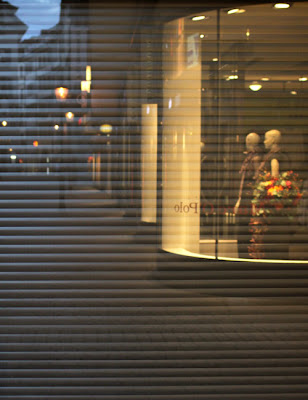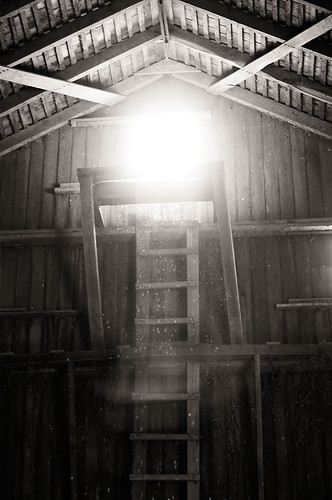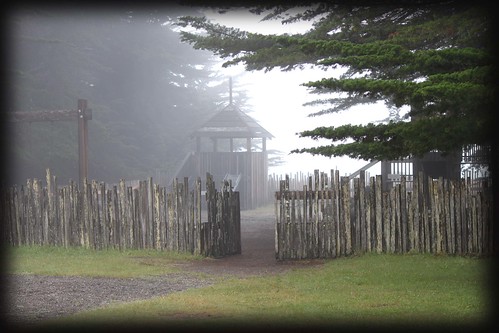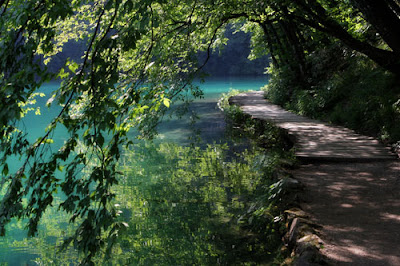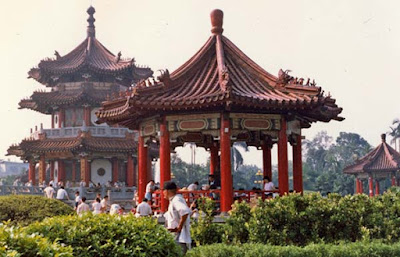Archives for July 2011
It’s Open! + Favorites: Tiny Pieces of Bliss
Barcelona, Spain, 2010
Exploring with a Camera: Reflections in Glass (2nd edition)
[Author’s Note: Through the summer months Exploring with a Camera will be “Second Edition” postings of previous explorations with some new images. You will find a new link up at the end of this post to share your photos, and your photos are also welcome in the Flickr pool for the opportunity to be featured here on the blog. I hope that you will join in!]
I’m so excited for today’s exploration! The “Exploring with a Camera” series is about seeing things around you in a different way. To get good photographs, you first have to see, like I discussed in this post. Today we’re looking at capturing images with Reflections in Glass.
Reflections in glass are so cool because the image you see is not a direct image of a subject. What’s behind and around the glass changes the images, and the reflection itself often softens and distorts the subject.
Below is an example from our recent stay in Lucerne, Switzerland [2010]. In this image, the only “direct” image you are seeing is straight through the walkway. The rest of the arches and store windows are reflections. See the people on the right? They are really on the left, not directly visible to the camera, but in the reflection they have a “ghost image” quality. It’s like an optical illusion, but it’s just looking down a corridor lined with glass.
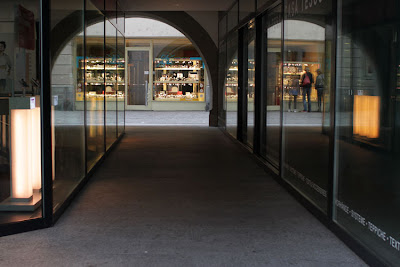 To get this image I moved around and took photos from several different angles and at different times with varying amounts of people. When I took this specific shot, I didn’t even notice the people visible in the reflection on the right because I was focusing on the “direct” part of the image being free of people.
To get this image I moved around and took photos from several different angles and at different times with varying amounts of people. When I took this specific shot, I didn’t even notice the people visible in the reflection on the right because I was focusing on the “direct” part of the image being free of people.
Here is another example, of my son looking out of a train window. The reflection draws your eye to his profile. Look at it for a while and you start to see the symmetric shape between the two profiles. You’ll also notice that the key areas of his face in the reflection – eyes, nose, lips – are clearly visible while the other parts are modified by what is seen out the window.
If there is something immediately behind the glass, you can get really cool effects in your reflections. The security door immediately behind the glass in this photo enabled me to get an uninterrupted scene of the reflected street in Lucerne but with a really unique texture.
A reflection can completely change a setting. Without the reflection of me and my family, the image below would be just another doorway to a modern building. Nothing of note that I would routinely photograph. With the reflection, it becomes a family portrait with a sense of place – you can see the wording above the door is in Spanish (we were in Barcelona) and the funky tube things draped across the top show part of the science museum we were entering. Notice how everything in the photograph seems to draw your eye to the center, where the reflection is. Also notice also the cool “double” effect with our reflections because the entrance had two sets of glass doors.
Here is another reflection of an entrance, a self-portrait of me at our apartment building in Italy. I love the sense of place that is achieved by what is reflected in the background, along with the tiny little suggestion of what is behind the door. Not a huge fan of my pictures of myself (who is?), I also like how the reflection softens my image so that I don’t focus on all of the things I immediately see as “flaws” in a regular photograph. Maybe I’m able to better see the real me, as others see me, because it’s a reflection.
And, just a reminder, glass is just not windows and doors! Here is a wine bottle, but in it there is a reflection of me and my family along with the buildings across the street in Nice, France. The subject here is the bottle, but the reflection adds interest.
Tips for getting your own images of reflections in glass:
1. Look for indirect light on both sides of the reflection. In reviewing pictures for this topic I realized that the most interesting reflections have indirect light as the main light source – either in shade or cloudy day or evening light. When there is a direct or strong light source on either side of the glass you will not get the kind of reflections I’m showing here.
2. Look in and Look out. Keep you eye out for reflections on both sides of the glass, whether you are indoors or outdoors. When you see the reflection, also notice what you see through the reflection. That can make or break the image! It’s easy to focus so much on the reflection that you don’t see something distracting on the other side.
3. Change your perspective. If you see a cool reflection, move around and photograph it from different perspectives and compositions. Because of the way you can often see what’s on both side of the glass, you may find a more interesting composition, or even a different reflection, if you move a few steps to the left or right than where you first noticed the reflection.
4. Look for reflections in all kinds of glass – not just windows. When you start to see these, you will notice that glass is everywhere, in all shapes and sizes and colors.
Update: The lead-in image in this post is from my latest trip to Venice. I had a prime spot at the front of the Vaporetto and loved getting a few of these reflection images. If you didn’t recognize this as the view from the Accademia bridge alone, I have the text right there to help you! Since this original post, I have been on the lookout for interesting reflections. You can get great contrasts and interesting compositions this way.
Have fun seeing all of the reflections in glass around you in a whole new way. Share your recent or past explorations on this topic, link up below or join the Flickr group to share.
Passing the Threshold
Favorites: The Sheltered Path
Letter from Carola
Almost 30 years ago, in 1983, I was fortunate enough to live in Taiwan. I was half way through my program of Chinese Studies at the University of Tübingen in Germany and thought it was time to experience the Chinese world by myself.
In 1983, Taiwan was still closer to being a developing country than a developed one. It struggled for political recognition next to its “big brother”, the People’s Republic of China, or “mainland China” as it was called in Taiwan.
For a 23-year old German girl, who had been to many European countries, arrival in Taiwan was a culture shock. At the same time it was an exciting adventure. New impressions, misunderstandings, exotic food to taste, new sounds and scents, snakes, dirt, dust, heat and high humidity and the ever present awareness of being a foreigner – you stand out as a “long nose” among the Chinese.
So when I returned to Germany shortly before Christmas on the height of consumerism, I was eager to tell my stories, to share my experience – and to my utter surprise I had a hard time to find the right words.
What do you answer to “How was it?” Fascinating? Interesting? Horrible? Sometimes downright heartbreaking? Well, imagine doing your laundry on a wooden washboard in cold water. No washing machine. No refrigerator either, for that matter. Was there even a Chinese word for dishwasher at that time? Blank faces were the answer, sometimes un-derlined by an “Oh my God”. Other people – those who KNOW EVERYTHING BET-TER – explained to me that Taiwan was not the “real China” – that was the People’s Re-public of China. What do you say in the face of so much ignorance?
The hardest part to tell and find even a hint of understanding in a country with excellent healthcare for everybody, was talking about the sick people. I had spent a lot of time with people suffering from leprosy, enjoying their company, sharing their laughter, feeling touched by their honesty and generosity. Only once after my return did I meet someone who had spent a year in a developing country and asked the right question, “What left the biggest impression on you?” Answer: an orphanage next to a Catholic church. A big room full of cribs with babies and toddlers. It was so crowded that often two kids had to share a bed. All of them were physically or mentally disabled, left on the steps of the or-phanage. Unwanted children. It was heartbreaking. It still haunts me.
Upon returning to rich Germany, it was hard for me to see the abundance here, especially when food was thrown away. Coming back to your own country can be a challenge. You are not the same person you were when you left. Your horizon has expanded; you were immersed in a different culture. You know that your country’s way of life is not the only one, and, far more important, not the only right one or superior one. Coming back to “my world” was almost as challenging as going away. The transition, however, didn’t take such a long time.
[Today’s letter is from Carola, author of the blog carola bARTz. She is currently living the ex-pat life again, this time in California. You can see all “Letters to Kat” posts here.]




